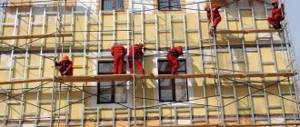The use of any mechanisms has a certain time frame. Such restrictions are necessary to ensure that the devices operate safely and that users of the equipment are not exposed to risks. Lifting equipment also has its limitations in use. The average service life of elevators is 25 years, but this figure does not provide a complete answer to such a complex and complex question.
The equipment manufacturer may indicate in the operational documentation its data on the use of cabins, compartment systems, electronic devices and control panels. There is also a warranty and maximum period for the use of winches, electric motors and other equipment.
Basic concepts about the service life of an elevator and its modules
The above 25 years is the time allotted for the operation of the cabins. After this period, replacement is not necessary. The service company must organize professional diagnostics of the devices and, if necessary, order their repair and restoration. Also, diagnostics of most important parts are carried out once every 12 years and 6 months. Some components of modern devices require testing every 5 years.
When determining the service life of elevators in residential buildings, the following criteria are taken into account:
- general data according to GOST - the cabin lasts 25 years, mechanical parts 12 years and 6 months;
- manufacturer's data are the most important instructions for the operation and reconstruction of systems;
- presence of current breakdowns - they must be eliminated, after which testing is carried out again;
- increased load on equipment - during active operation, maintenance will be required more often;
- frequent failure of a certain unit - the service company must replace such a unit with a new one.
There is no clear definition of the maximum service life of an elevator in an apartment building. After 25 years of service, it is possible to carry out diagnostics, test basic systems and extend the use of equipment. Often this period in the elevator industry of the capital and other large cities is a reason only for diagnostics. There is no legal requirement to completely replace cabins and equipment at the end of their useful life.
At whose expense is the repair carried out?
Mandatory payments for the maintenance of elevators prescribed in the Housing Code are paid by all owners of apartments in the building without exception.
These amounts are transferred to a special account, and subsequently, it is at the expense of them that major repairs and replacement of elevator mechanisms are carried out.
If residents are not the owners of residential premises, but use them under a social tenancy agreement, then the funds are allocated exclusively from the local budget.
If the accumulated funds are not enough to carry out events in the required volume, a loan may be offered. Regional operators have the right to borrow funds from the accounts of other houses and then return them.
Contributions for the maintenance of elevators are an important expense, not only allowing them to constantly maintain the mechanisms in proper condition, but also guaranteeing their timely replacement.
When is an elevator replaced?
Most often, the question of replacing lifting devices in residential buildings arises after 20-25 years of service. You should look at the technical documentation from the manufacturer of the equipment set and check the maximum service life. The verdict on replacement is made by specialists after diagnostics. If repairs are carried out at the expense of residents, such a decision can be made by a meeting of apartment owners.
The main reasons for changing equipment are as follows:
- the service life of the elevator in an apartment building has been exceeded;
- the device constantly breaks down, large sums of money have to be allocated to eliminate breakdowns;
- there is no proper safety in the operation of elevator equipment, important systems do not work;
- specialists have identified problems that cannot be repaired;
- After testing, the master recommended replacing the mechanisms due to a decrease in their reliability.
The replacement or repair procedure depends on who is responsible for the elevator facilities in a particular building. Today, there are several liability options, and for residents, this completely changes the process of ordering the necessary work. In any case, to diagnose, restore or replace systems, you should contact only independent and experienced specialists.
Elevators will become safe
On April 23, President Vladimir Putin signed a law according to which elevator service organizations are required to notify Rostechnadzor about the start of their activities. The next step will be the introduction of a new article into the Code of Administrative Offenses on punishment for violating the rules for operating elevators. The State Duma will consider the corresponding bill in May.
Riding in an elevator is unsafe
In Russia there are about a thousand elevator organizations and 440 thousand elevators, of which 130 thousand have exhausted their service life. According to the vice-president of the National Elevator Economy Alexey Zakharov
, today the standards for elevator maintenance are not too strict, and the result is a large number of accidents and casualties.
In 2013, elevators were excluded from the category of hazardous production facilities, and as a result, accident statistics increased sharply. On average, 50 people a year die due to elevator accidents. Read on the topic
Elevator safety will be taken under state control
On April 23, 2020, in Saratov, the elevator of the entrance broke and flew along with the passenger in free fall for six floors. The resident of the building who was in the elevator was not injured. The man said that previously residents had repeatedly contacted the Investigative Committee, the prosecutor's office and the State Housing Inspectorate with complaints about a faulty elevator. As a result, it was repaired and put into operation, but the next day it broke down again and fell into the mine.
Last year, a mechanic was crushed to death by an elevator in one of the houses in the Moscow region. He was repairing the doors of the device, but forgot to turn off the lift itself. The doors suddenly slammed shut and the elevator began to move. During the construction of the Heart of the Capital residential complex, five construction workers died when an elevator fell due to a broken cable. In 2020, a stroller with a baby was caught in the elevator doors when parents tried to enter it. The child's mother was in the elevator, and the father was on the landing. The elevator began to move down and crushed the stroller. It was not possible to save the child.
There were 70 accidents in 2020, resulting in 24 deaths and 25 serious injuries. In particular, the daughter of TV presenter Evgeniy Kochergin
, and this case highlighted the problem of accidents in the elevator industry.
A fine will be imposed for violations of the rules for operating elevators.
In January 2020, the Government introduced a bill to the State Duma supplementing the Code of Administrative Offenses with a new article providing for liability for organizations operating hazardous facilities for violating the Rules for the safe use and maintenance of elevators, lifting platforms for the disabled, moving walkways and escalators. The exception is escalators in subways.
Let them check at least every day to make sure that the elevators don’t break down and that people don’t get stuck and fall into the shafts.
The rules themselves were approved in June 2020. They establish measures for the safe use and maintenance of elevators and escalators, the procedure for recording them, and requirements for the work of their installation, dismantling, maintenance and repair. It has been established that every management company must have a specialist who understands elevator equipment. And mechanics who will be involved in the direct repair of elevators will be able to start their work only if they have received a specialized education and passed a qualification exam.
The bill developed by the government introduces administrative fines for violation of the rules. Officials will pay from two to five thousand rubles, and legal entities - from 20 to 40 thousand rubles. If the violation creates a threat of harm to the life and health of citizens, or the occurrence of an accident, then it is proposed to introduce a fine for citizens from three to five thousand rubles, and for officials from 20 to 30 thousand rubles with disqualification for a period of one to one and a half years. Legal entities will have to pay a fine of 300 to 350 thousand rubles. They also face administrative suspension of activities for up to 90 days. The explanatory note to the bill clarifies that citizens are understood as individuals, including those performing installation, dismantling, maintenance work, including emergency maintenance of elevators, lifting platforms for the disabled, passenger conveyors and escalators, as well as their repair, technical examination and inspection of elevators.
Read on the topic In fire order
It is also proposed to introduce similar liability for officials and legal entities for failure to comply on time or improper compliance with Rostekhnadzor’s instructions in the field of operation of elevator facilities. Currently, there is no liability for citizens, officials and legal entities for violations of the rules for operating elevators.
Deputies support the bill, since now liability for violations of the rules for operating elevators is very vague. “Vertical transport is the same high-risk object as cars,” Galina Khovanskaya,
. — Many accidents occur, including deaths. Of course, responsibility needs to be spelled out in legislation.” According to her, the unclear and vague provisions that exist now are not suitable for this case.
First Deputy Chairman of the State Duma Committee on State Construction and Legislation, First Deputy Head of the A Just Russia faction Mikhail Emelyanov
supports the introduction of administrative penalties, but believes that in parallel it is necessary to adopt a program for reconstructing the elevator industry in Russia and supporting domestic ones. “We must understand that the elevator industry did not fall into decay on its own, this is a serious miscalculation of the Government itself.”
Rostechnadzor will be able to control elevator organizations
If elevators are located in a residential building, the management organization is responsible for them. She enters into an agreement with contractors who must carry out maintenance, as well as an agreement with the emergency service, which will arrive if the elevator breaks down. Now there is a scheme in which the company that wins the competition installs an elevator, and only if it breaks down or an accident occurs will the company be inspected. Organizations are checked for any emergency situations or citizen complaints. There is self-regulation in the industry, in particular, the National Elevator Union. But still, when it comes to safety, self-regulation alone is not enough.
The bill will allow monitoring and control over the activities of business entities.
On April 23, President Vladimir Putin signed a law that comes into force on September 1, 2020 and obliges elevator service organizations to send a notification about the start of their activities to Rostechnadzor. Previously, such notification was not required from enterprises engaged in these activities.
According to the Deputy Minister of the Head of the Federal Service for Environmental, Technological and Nuclear Supervision Alexander Rybas
, the law has been prepared to develop decisions already taken aimed at improving the safety of elevators. The document will affect those organizations that install, dismantle, and operate elevators, lifting platforms for the disabled, passenger conveyors and escalators.
The official stated that currently no records are kept of such organizations, so it is impossible to control their activities. If they notify supervisory authorities, the state will be able to supervise their work. “The bill will allow for monitoring and control over the activities of business entities,” said Vladimir Gutenev,
. The deputy noted that in 2020 the number of deaths from accidents due to elevator malfunctions decreased. But at the same time, 27 percent of elevators in Russia are dangerous to operate, since they are over 25 years old. According to Gutenev, the law resolves the issue of control over elevator organizations without a significant burden on officials of supervisory authorities.
Chairman of the Public Organization for the Protection of Consumer Rights Oleg Pavlov
I am sure that after the law comes into force there will be fewer scammers in the industry. “As practice shows, any restrictions and additional requirements are easily met by companies that feel good in the market and comply with all existing security requirements,” he said.
As practice shows, any restrictions and additional requirements are easily met by companies that do well in the market and comply with all existing security requirements.
The law signed by the president will allow for routine inspections of elevator organizations. Head of the State Duma Committee on Labor, Social Policy and Veterans Affairs, deputy head of the LDPR faction Yaroslav Nilov
previously told the Parliamentary Newspaper that inspections can be carried out unscheduled: the more there are, the better, because the comfort and safety of citizens depends on the technical condition of the elevator. “The use of elevators must be in accordance with safety precautions, on the one hand, and constant monitoring of its condition, on the other hand,” the deputy emphasized. “So let them check at least every day to make sure that the elevators don’t break down and that people don’t get stuck and fall into the shafts.”
Types of elevators in residential buildings
When considering the types of elevators in residential buildings, it should be noted that there are practically no restrictions on functionality, design and visual design for them. They can be electric or hydraulic, with closed or open shafts, with top or bottom suspension, panoramic and other types. There are three main groups of equipment in this class:
- Freight elevators. This category is intended for lifting/lowering heavy loads, the weight of which can reach several tons. At the same time, they can also serve as passenger lifts. The exact characteristics and dimensions of freight elevators in residential buildings depend on the requirements for this equipment and the conditions of its use.
- Passenger elevators. Compact units are designed exclusively for transporting passengers. They are not intended to transport flammable or explosive items, or heavy cargo. As a rule, their lifting weight is limited to several hundred kilograms.
- Freight-passenger elevators are universal solutions that combine the functions and capabilities of the two previous groups.






